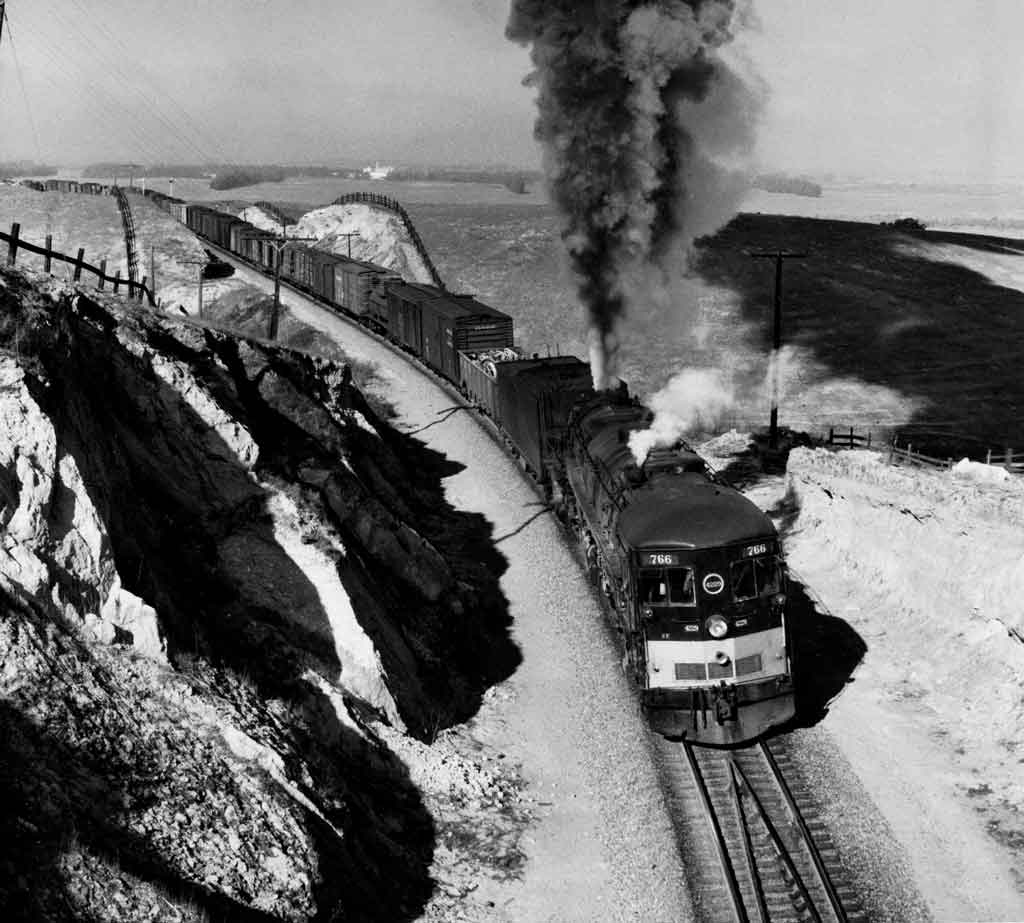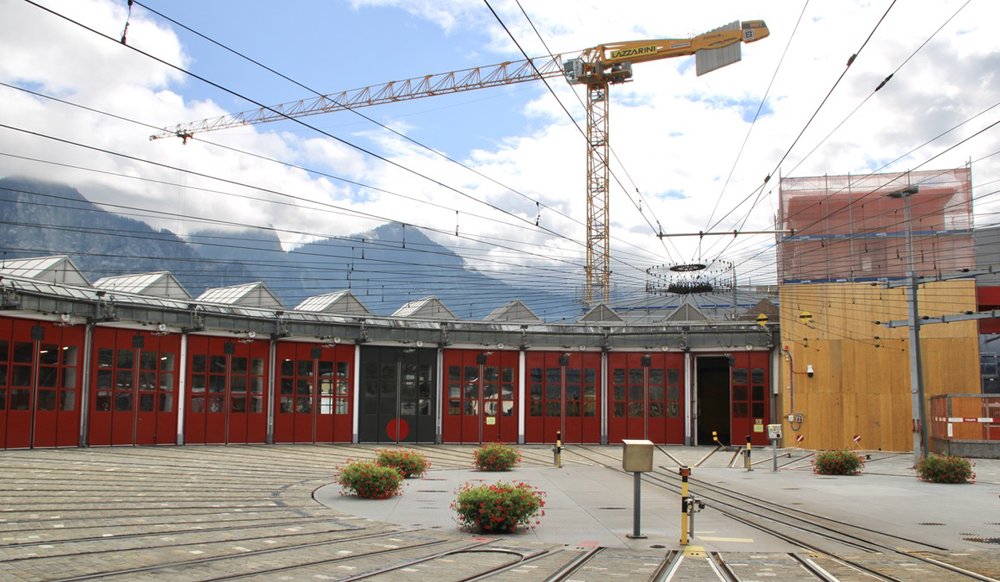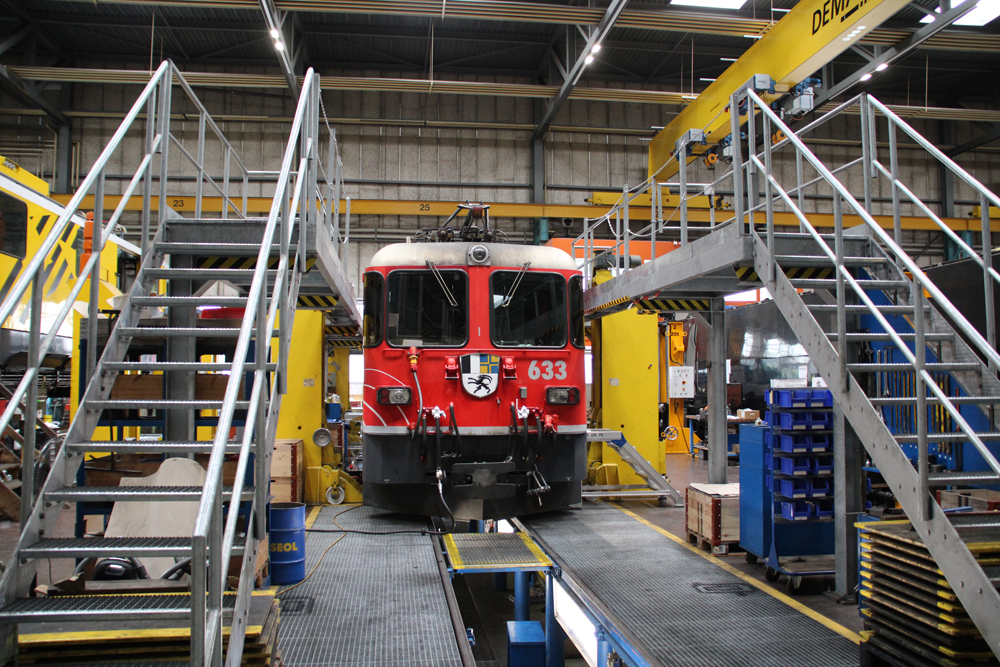As an 18-year-old kid going firing on Southern Pacific’s Coast Division in 1953, my life was just one big adventure. Had I believed in jinxes, however, I might not have been so enthusiastic. Before my first two months on the job had passed, I’d already been involved in two mainline wrecks.
The first occurred on August 19 on the San Francisco Peninsula double-track main. I’d been called for 2 a.m. on duty for a TBX (Trans-Bay extra, San Francisco to West Oakland) from Bayshore Yard, engine 4376, with about 80 cars. The clean-firing 4-8-2 was a fast runner, and this promised to be a smooth trip. We cleared the yard limits, and engineer Perkins soon had a roll on ’em as we highballed down the Peninsula.
As we rounded a left-hand curve at Millbrae, the head brakeman standing in the gangway behind me and I both looked back over the train expecting to report “all black,” but what we saw was a great shower of sparks erupting about mid-train. Just as we turned to shout at the engineer, the brakes went into emergency and we ground to an abrupt halt.
We couldn’t see a thing in the predawn darkness, so the engineer sent the head brakeman back to investigate. On the horizon ahead, the headlight of train 105, the first of 20 inbound morning commute trains, was just showing at Burlingame. I hustled out with torpedoes and fusees to get him stopped.
As dawn gradually illuminated the scene, I climbed atop the tender to have a look to the rear. There lay about 20 cars of our train scattered across both mains with cars upside down, standing on end, and tossed every-which-way. A couple of reefers filled with beer had broken open and spilled their contents along the right of way.
The wreck completely plugged both main lines for a couple of days, resulting in hundreds of San Francisco-bound commuters being late to work. The morning Daylight was cancelled and the westbound Starlight and Lark were diverted to West Oakland via the Dumbarton Bridge.
Although the crew in the caboose had been shaken up, no one had been hurt. Several hours later, we continued on to West Oakland, a forlorn train of just 17 cars with an empty gondola carrying the markers.
Later investigation determined a loose brake beam on one of the boxcars had dropped into the frog of a switch. At 50 mph, that causes one heck of a wreck!
Barely a month later, the second incident occurred. With a slack traffic season in late summer, I’d been cut off the fireman’s extra board and loaned out to the Sacramento Division, working out of Roseville.
On a hot September afternoon at Gerber, Calif., just north of Tehama where SP’s West Valley and East Valley lines diverge, I was called to fire the 4228, a cab-forward. We were the second engine of a light doubleheader running as Extra 4208, routed down the West Valley line to return to Roseville via Davis and Sacramento. Most freight traffic moved over the single-track East Valley line via Marysville, but because we were just a light-engine move, the dispatcher routed us over the quiet West Valley route usually reserved for passenger trains and locals.
Firing the second engine of a light doubleheader is pretty easy work. Because the tender ahead obscures the view, the engine crew doesn’t even have to call signals.
With just a spot fire to keep up steam, I was pretty relaxed, watching the scenery roll by. We’d just passed through the little town of Arbuckle when all hell broke loose. There was a great crashing noise, and rocks and gravel came flying past the window. We came to a screeching halt.
Climbing down from the cab, I immediately saw that the 4208 had thrown a connecting rod. I wouldn’t have believed heavy steel could be twisted like that! The rod was bent in a “U” shape and had destroyed the ends of every eighth or tenth tie where it had struck revolving with the wheel. It had sheared the piping on the engineer’s side clear down to the boiler lagging. Fortunately, it had not hit the cab, or the engineer would have joined the angels.
With the dispatcher’s blessing, we pulled the 4208 back to the nearest siding where its crew would wait for the roundhouse gang from Roseville to arrive by truck, then we proceeded to Roseville as Extra 4229 West.
I fervently hoped not all my railroad career would be this exciting!
First published in Fall 2006 Classic Trains magazine.














